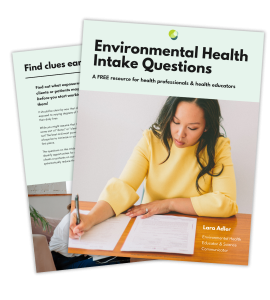I’ll start by saying that I’m not going to write another analysis of the Stanford study – there’s enough of that going around as it is! (want to read some of the better comments made that punched holes in their study? click here for a fantastic, Grist breakdown.
What I am going to do is highlight a little bit of the other side of the story that Stanford conveniently left out. You know, the big glaringly obvious PESTICIDES piece.
Here’s the deal. There are over 800 MILLION pounds and around 17,000 different kinds of pesticides used in the US each year – this includes insecticides, herbicides, and fungicides. About 20% of these 17,000 are what are known as “systemic pesticides” which means that they make their way into the plant via the roots, so no amount of washing or peeling will remove them. They’re inside.
One of the most commonly used classes of pesticides is called “Organophosphates”. These super baddies were originally developed as nerve-gas agents for chemical warfare (great), and they work by paralyzing muscles and disabling the central nervous system of exposed creatures. Organophosphates are used to treat food crops like apples, peaches, pears, cherries, grapes, peas, spinach, corn, and citrus crops. Exposure to these types of pesticides are linked to everything from learning and memory problems, depression, liver damage, and worse, brain tumors, leukemia, lymphomas, and increases in birth defects.
A recent study published in the journal Neurotoxicology and Teratology of one particular organophosphate called chlorpyrifos, found that boys exposed to this pesticide in utero showed a decrease in IQ. This mirrors other studies that have found significant IQ drops in children exposed in utero, as well as abnormalities in part of the brain associated with memory. It’s pretty well established that chlorpyrifos is a developmental neurotoxin with the potential to impact behavior, aggression, social skills, ADHD and other issues that are rampant in kids these days.
Not a baby? Okay, fine, but organophosphates are also “obesogens”- chemicals that have been linked to metabolic disorders that can result in overweight, obesity, and diabetes. (If you didn’t already listen to my free training call Chemicals Not Calories – Uncovering Obesogens, you should do that now)
The bottom line? For me it’s not about nutrients. It’s about avoiding neurotoxic, carcinogenic, hormone disrupting, and developmental and reproductive toxins in the food I eat every day. Funny thing is, even though the media spun the Stanford study to be all about the nutrients (since that was the focus after all), turns out the study just reinforced what I already knew: the consumption of organic foods reduces exposure to pesticide residues (by their calculation, by 30%, although many argue those numbers are whack, and that’s it’s significantly higher.).
Where do you stand – and how well are you able to have the “organics” conversation with your clients?



